Of the fungus, that is. Not yourself!
Another feature to consider when identifying mushrooms is whether there is bruising or bleeding when they’re cut.
Certain mushrooms will change colors when damaged or injured. Cutting into a mushroom and observing any color changes can be very important when trying to determine what it is.
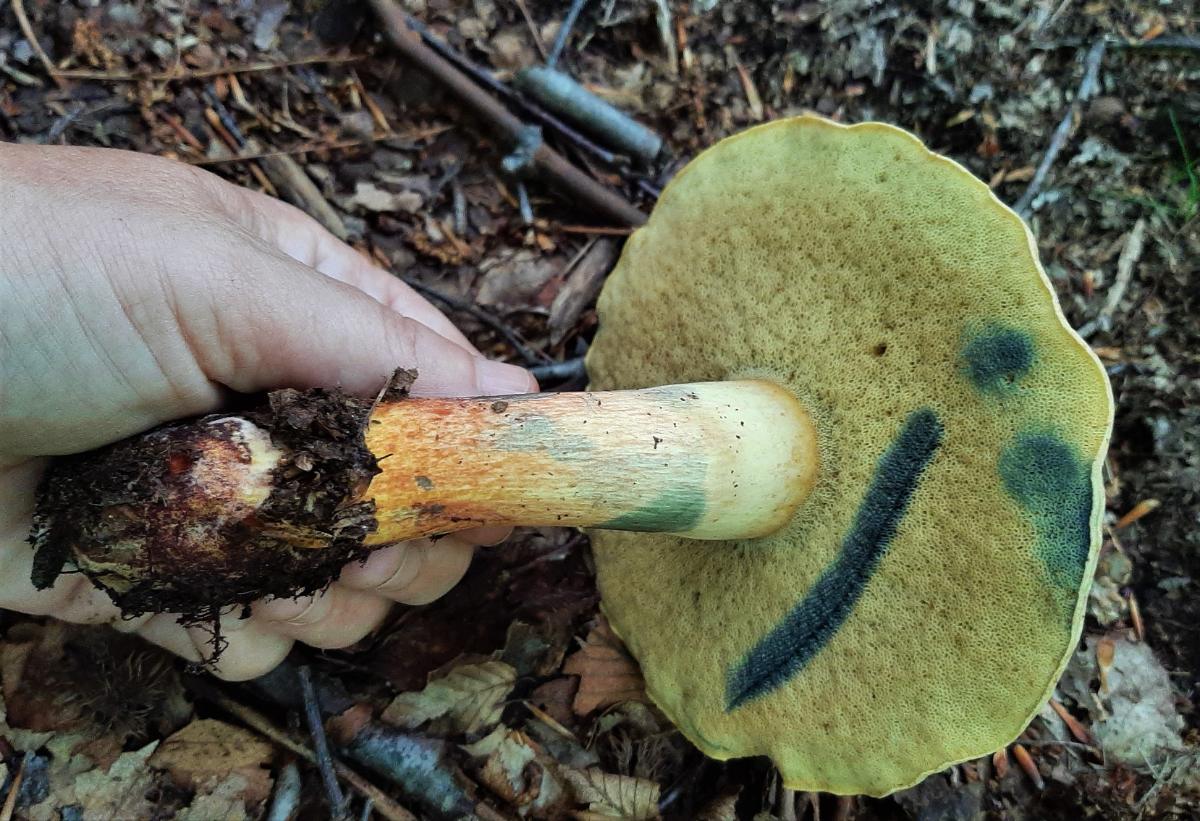
Please note that color change alone is one of the least reliable ways to go about mushroom identification. There are always variations, and color changes may not be trustworthy depending on the age of your fungus. Use mushroom bruising as just another tool in your identification arsenal.
Let’s examine identifying mushrooms through bruising and then through bleeding. We’ll end with a quick list of some well-known examples. For more mushroom identification features, see this page.
Jump to:
Mushroom Bruising and Staining
While identifying mushrooms, check for bruising by nicking the top and bottom of the cap and watching for any color change. Try this within 30 minutes of picking, as specimens that are not fresh won’t give a reliable result.
Note the blue coloring when the cap is sliced — on this bolete species the flesh slowly turns blue.
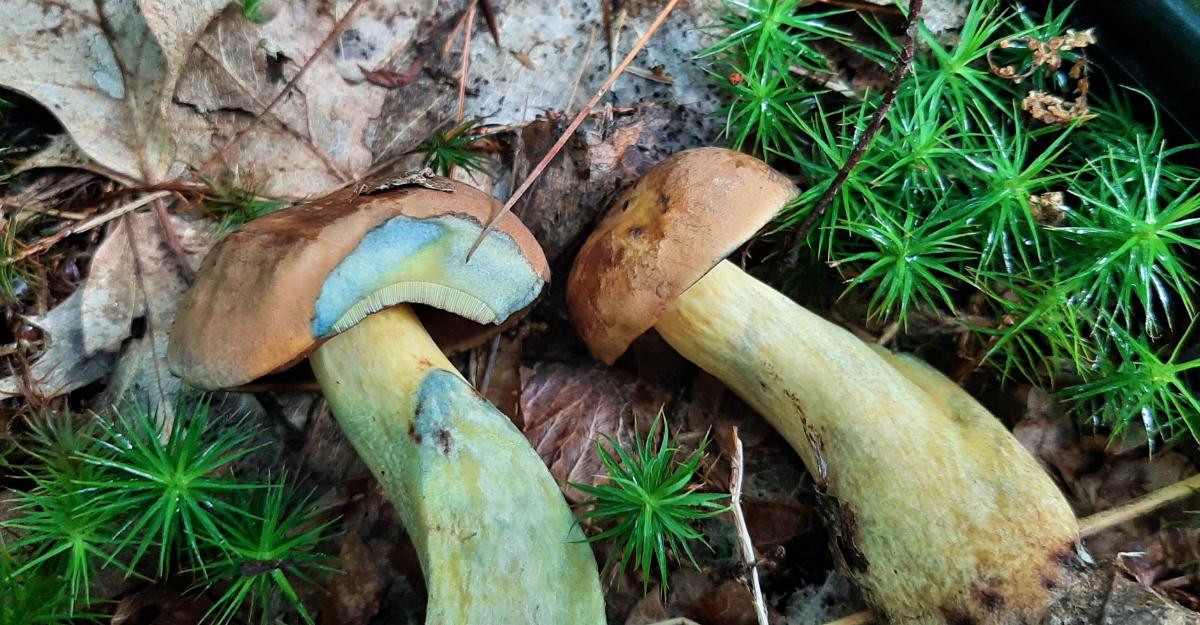
Why does this happen? The color change is caused by a chemical reaction that occurs when certain compounds in the cell walls of the mushroom are exposed to air.
Once you nick the cap and break the cell walls, oxygen in the air mingles with these compounds and changes them. Take Gyroporus cyanescens for example. When exposed to air, the variegatic acid in this mushroom is converted to the blue-colored molecule quinone methide.

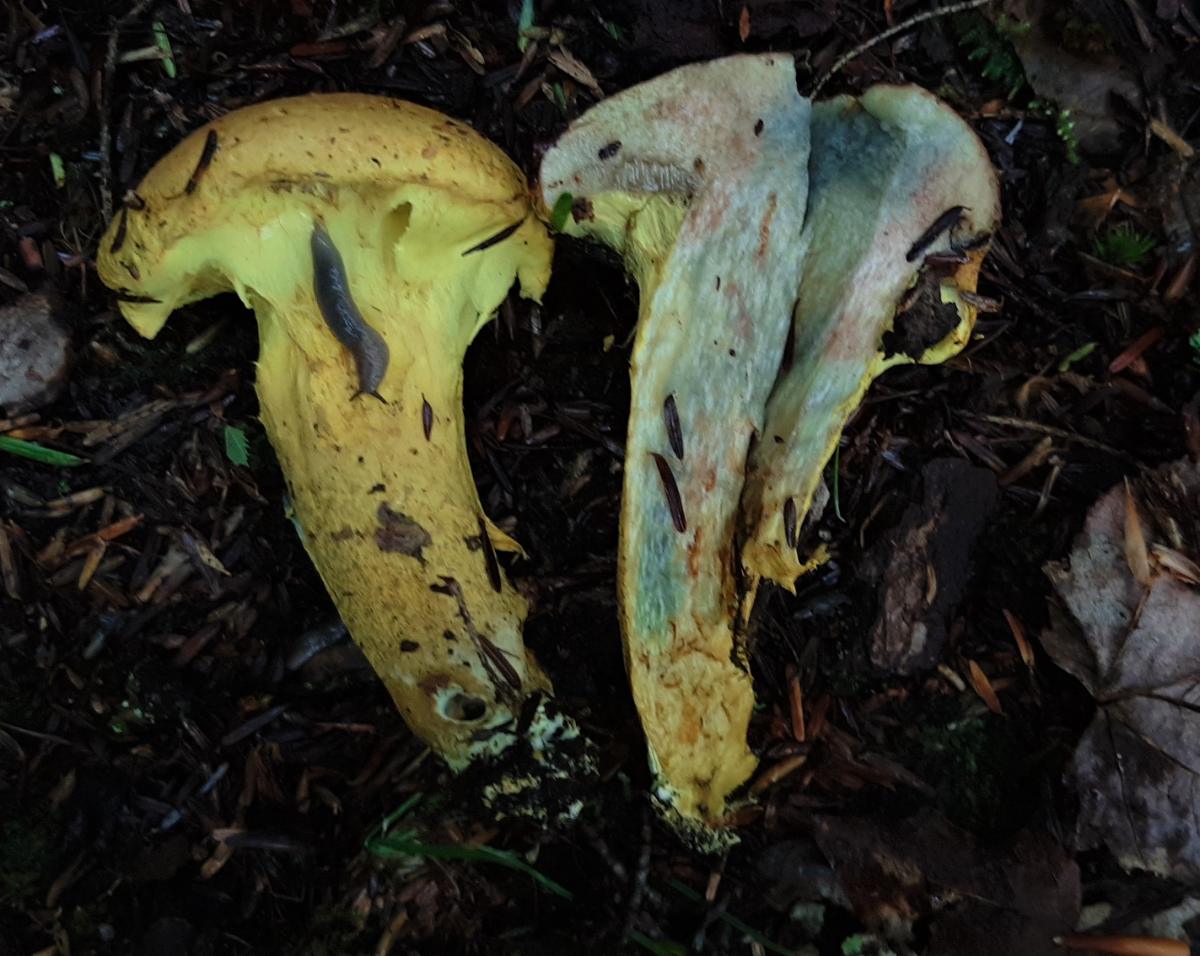
There are many famous blue-bruising mushrooms. A common rule for boletes is that you shouldn’t eat one that has a red pore surface and bruises blue. Because many blue bruising boletes are toxic, it’s best to avoid them altogether. That is, until you learn the individual species. It gets much easier to determine if the blueing is an indication of toxicity once you know the mushrooms.
Steps For Analyzing Bruising and Staining Mushrooms
- Time how long it takes to stain — some are very slow and can take up to an hour. Most identification guides use 5 minutes as the marker. It either turns color in less than five minutes, more than five minutes, or doesn’t change color at all.
- Notice the exact coloring — is it dark blue, blue/green, red, pinkish, or brown? It makes a difference for identification.
- Is the the stem, cap, gills, or pores that stain? Some mushroom gills stain but their stems and caps don’t.
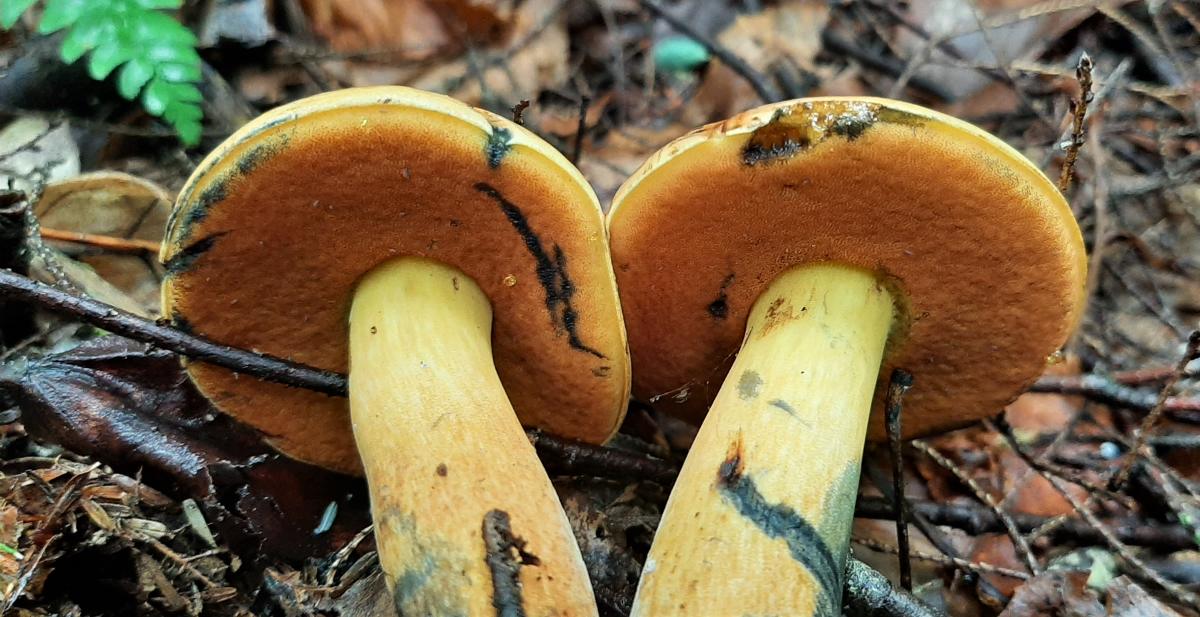
Some people think that all blue bruising mushrooms are safe to eat or are hallucinogenic. The bolete rule above proves that is not true. This myth is an example of why identifying mushrooms through bruising alone is a bad idea!
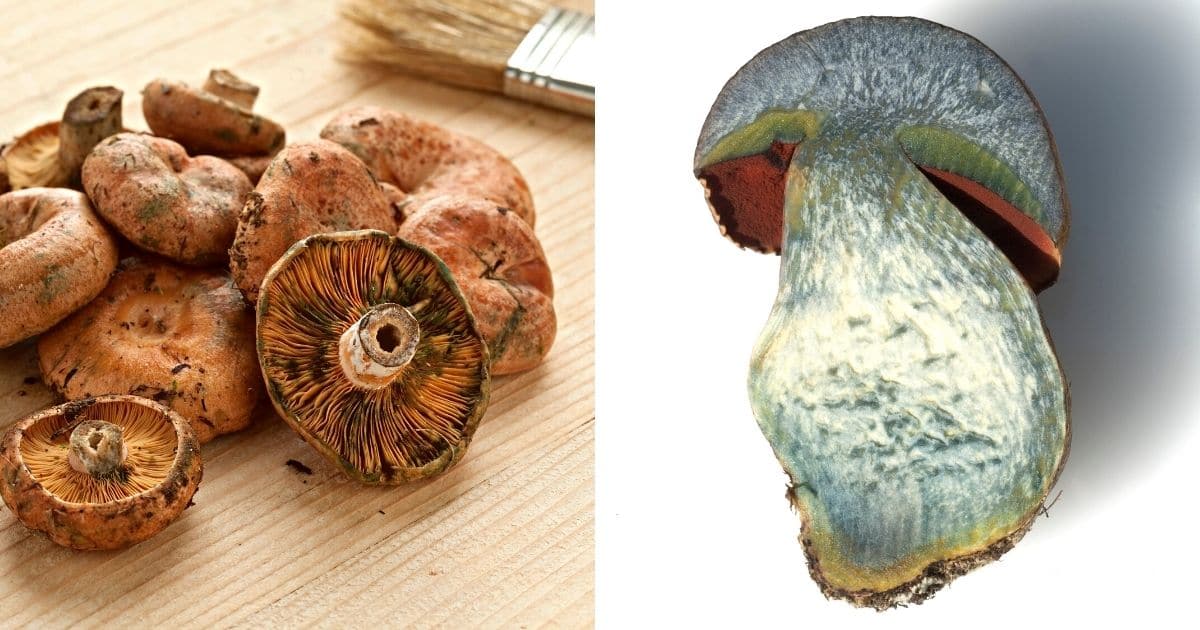
Mushroom Bleeding
Certain mushrooms will exude a milky liquid substance when they are cut. This is not real “blood” of course but natural latex that’s produced when the mushroom is injured.
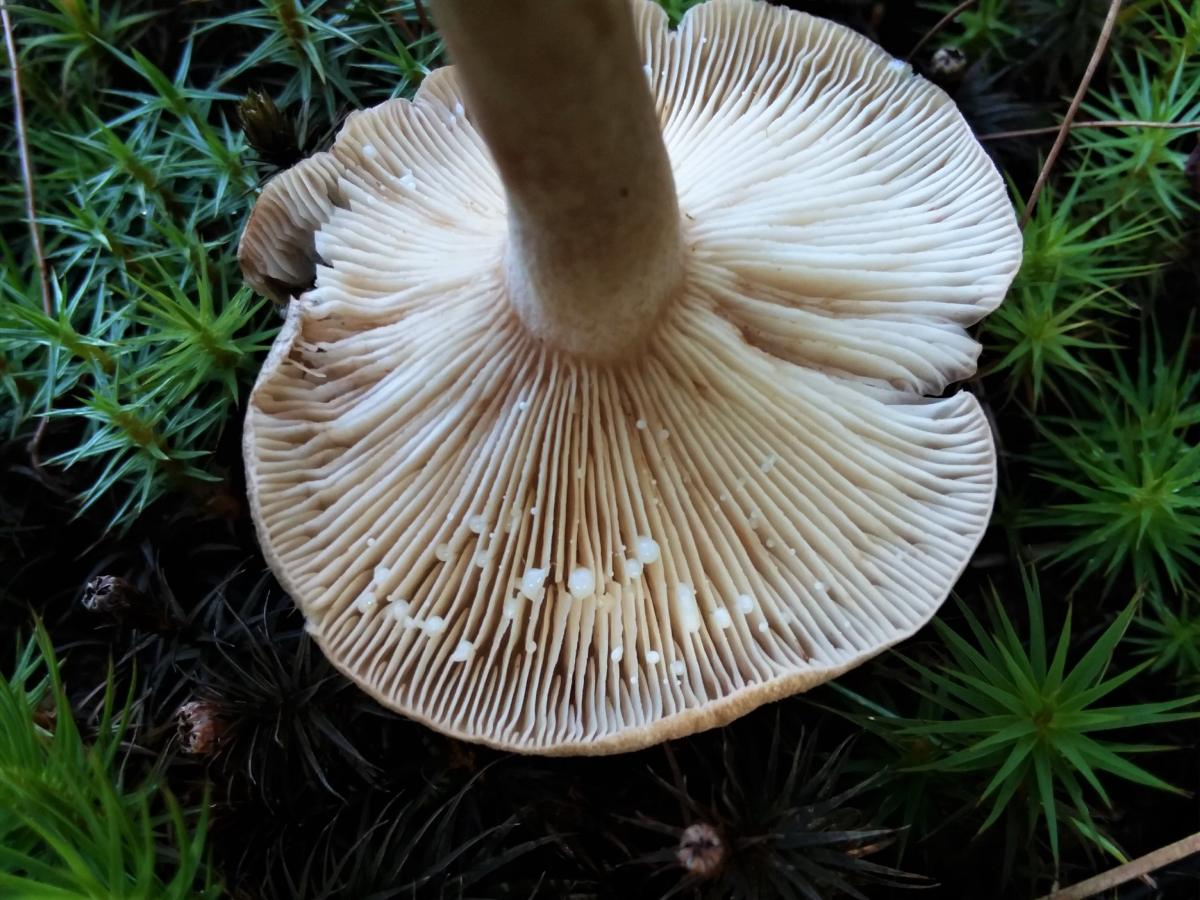
The exact reason for the latex is not fully understood. It is believed to be a method of defense, due to its bitter taste and the fact that it dries to form a protective coating around the injury. This keeps out bacteria and other contaminants.
Some of the most famous bleeding mushrooms are those in the Lactarius genus. These are called the milky caps due to the milky latex they exude upon injury.
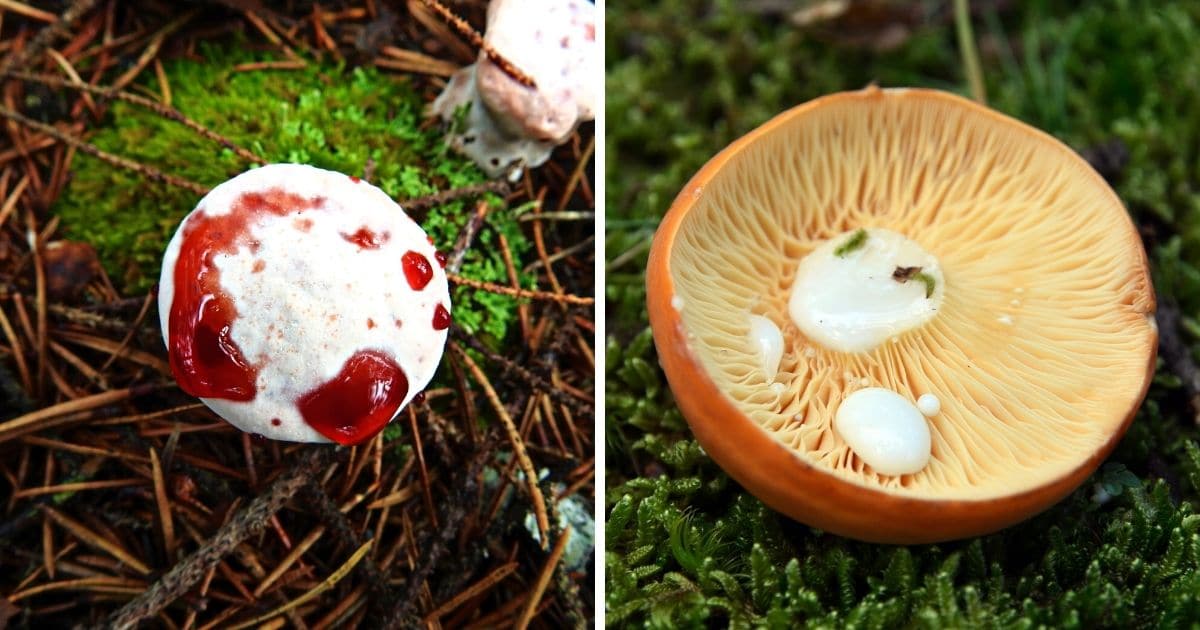
If you’re observing any bleeding during mushroom identification, be sure to note both the initial liquid color and the final dried color. These will sometimes be different.
An example is the green bruising and orange bleeding Lactarius deliciosus, the saffron milk cap. When bruised, the mushroom turns green. However, when the gills are cut, this mushroom bleeds orange and it doesn’t change color.
Identifying Mushrooms: Bruising and Bleeding Examples
Below are some examples of bruisin’ and bleedin’ mushrooms. This list is by no means exhaustive:
- Agaricus bisporus (white button mushroom) – Usually bruises pinkish. Stick your thumb into a grocery store-bought one to test.
- Boletus campestris – Bruises blue or blue-green. Many yellow-pored boletes bruise blue.
- Psilocybe cubensis – The stems bruise blue or blue-green. This is a hallucinogenic mushroom, but note that not all hallucinogenic mushrooms bruise blue.
- Russula rubescens – Bruises reddish, and then slowly turns to black.
- Mycena haematopus – Bleeds purplish.
- Lactarius helvus (maple syrup milky cap) – Bleeds colorless latex that smells like maple syrup.
- Lactarius chrysorrheus – Bleeds white latex that dries to a deeper yellow.
So the next time you’re identifying mushrooms, don’t forget to check for bruising and/or bleeding. While no identification is guaranteed, it can be an important piece of information!

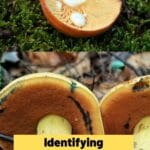
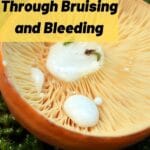
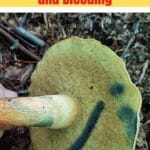
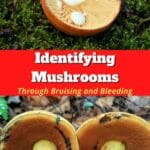
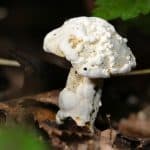
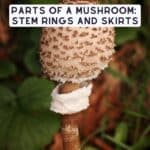
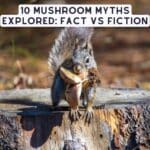
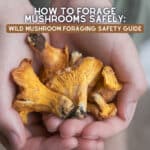
Fred E ricK says
I found some golden teacher mushrooms over six years ago that when picked the stem goes a fluorescent purple any information as I didn”t consume them and are wondering if you have any information or was it just luck or a mutation Fred E ricK
Jenny says
No, we don’t deal with identifying psilocybin mushrooms.
Connie Fucito says
These mushrooms are proliferating in my yard. Some are in the shade of a Maple tree and others are in the sun. They make tightly clustered groups as well as individuals. They are light brown on top, the stem is white which turns brown with a pattern after picked. The underside has pores that are tiny and have a consistent tan color. I believe it id a Boletis species, but I am a total amateur. I wish I could post a picture.
I have puppies in my yard and they have ignored them, but I am worried that if they do eat any that identification might be critical. Can you help me with and ID?
Jenny says
You can post pictures in our facebook group. Please be sure to read the featured/pinned post and include images of all parts of the mushroom as well as where you’re located. https://www.facebook.com/groups/340690111324762
Ryan says
Thanks for this site you’ve arranged, easy to navigate, lions Maine has been most illusion here in the Gatlinburg region of TN. Friend of mine took ne to the woods in hopes to find some and we did within 5 min and never ever since been 4 years and I’ve yet to think I may Gabe spotted any since. Would love to grow it at home is it easy ? Is it proved to infestations or illness indoors? Thanks again no hurry I’ll likely not spot any thus weekend goin foraging with it as the prize goal a patch of morels would do but thanks again sites that charge gace leaguer content and without paying the photos are easily misleading
Jenny says
Lions mane is super easy to grow at home — check out this guide for grow kits https://www.mushroom-appreciation.com/mushroom-growing-kits.html